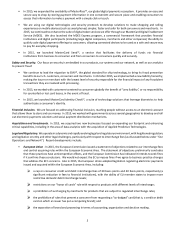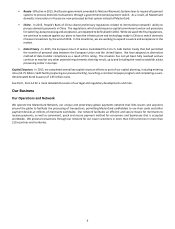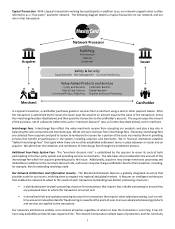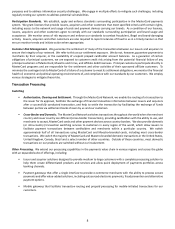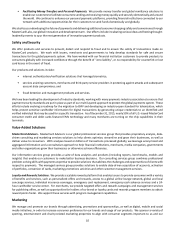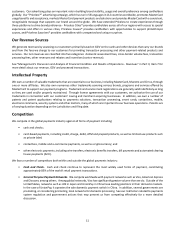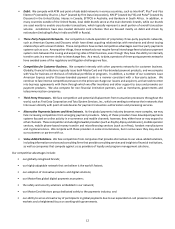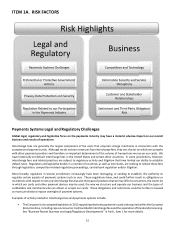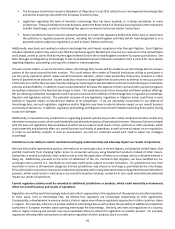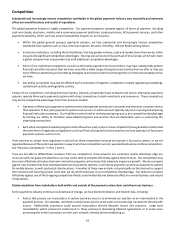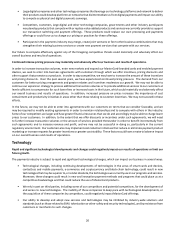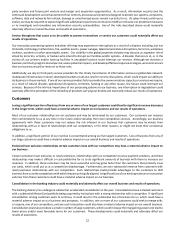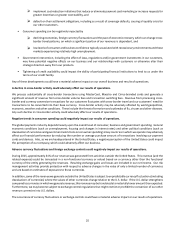MasterCard 2015 Annual Report Download - page 21
Download and view the complete annual report
Please find page 21 of the 2015 MasterCard annual report below. You can navigate through the pages in the report by either clicking on the pages listed below, or by using the keyword search tool below to find specific information within the annual report.
15
ITEM 1A. RISK FACTORS
Payments Systems Legal and Regulatory Challenges
Global legal, regulatory and legislative focus on the payments industry may have a material adverse impact on our overall
business and results of operations
Interchange fees are generally the largest component of the costs that acquirers charge merchants in connection with the
acceptance of payment cards. Although we do not earn revenues from interchange fees, they are a factor on which we compete
with other payment providers and therefore an important determinant of the volume of transactions we see on our cards. We
have historically set default interchange fees in the United States and certain other countries. In some jurisdictions, however,
interchange fees and related practices are subject to regulatory activity and litigation that have limited our ability to establish
default rates. Regulators and legislative bodies in a number of countries, as well as merchants, are seeking to reduce these fees
through legislation, competition-related regulatory proceedings, central bank regulation and/or litigation.
More broadly, regulators in several jurisdictions increasingly have been leveraging, or seeking to establish, the authority to
regulate certain aspects of payments systems such as ours. These regulations have, and could further result in, obligations or
restrictions with respect to not only interchange fees but also the types of products that we may offer to consumers, the countries
in which our cards and other payment devices may be used, the way we structure and operate our business and the types of
cardholders and merchants who can obtain or accept our cards. These obligations and restrictions could be further increased
as more jurisdictions impose oversight of payment systems.
Examples of activity related to interchange fees and payments systems include:
• The European Union adopted legislation in 2015 regulating electronic payments issued and acquired within the European
Economic Area, including caps on consumer credit and debit interchange fees and the separation of brand and processing.
See “Business-Recent Business and Legal/Regulatory Developments” in Part I, Item 1 for more details.


